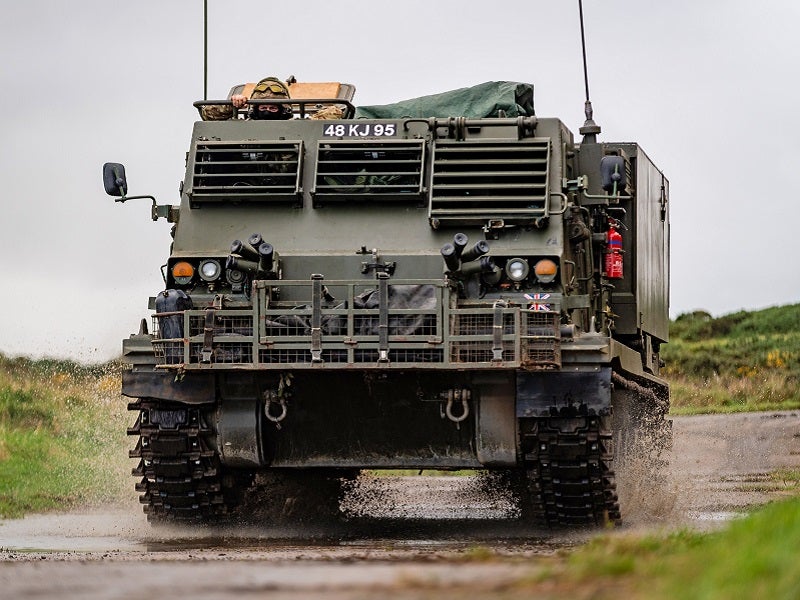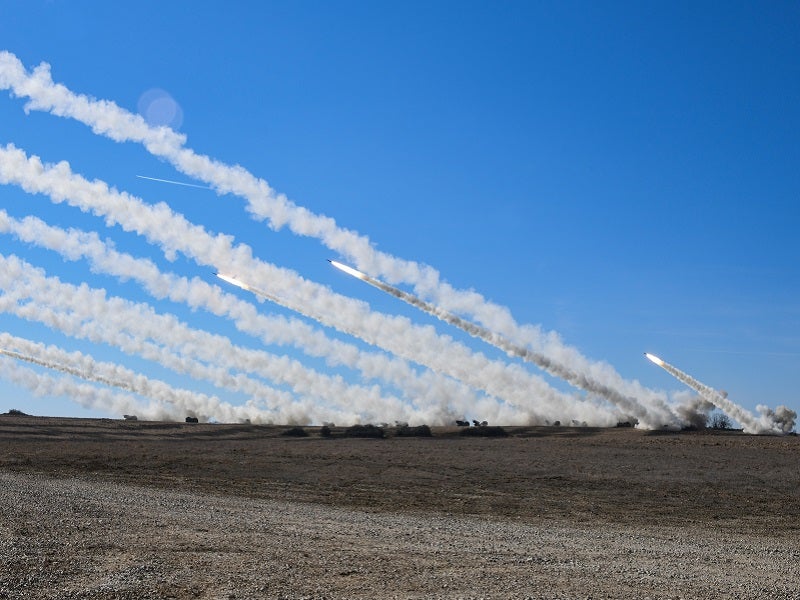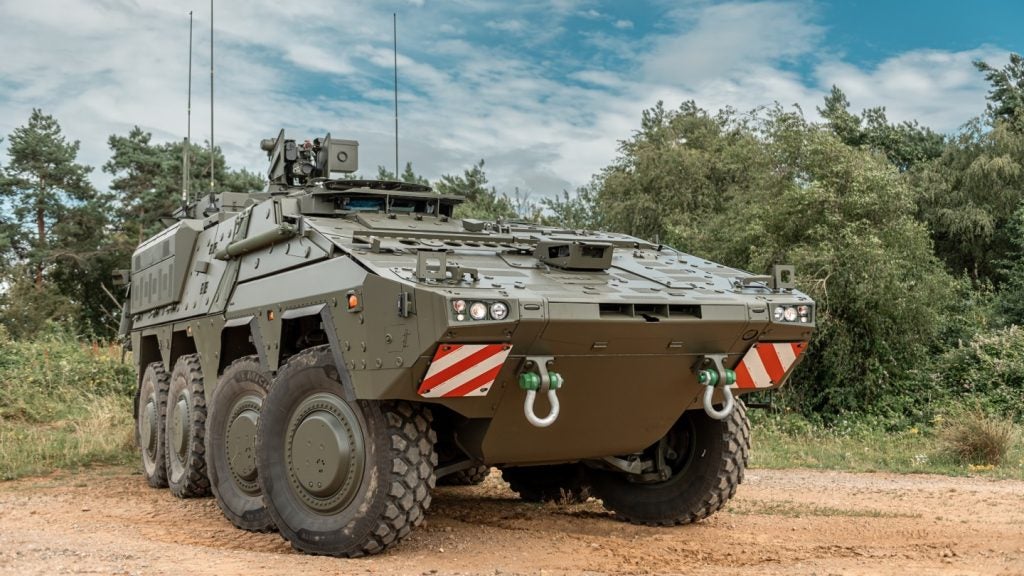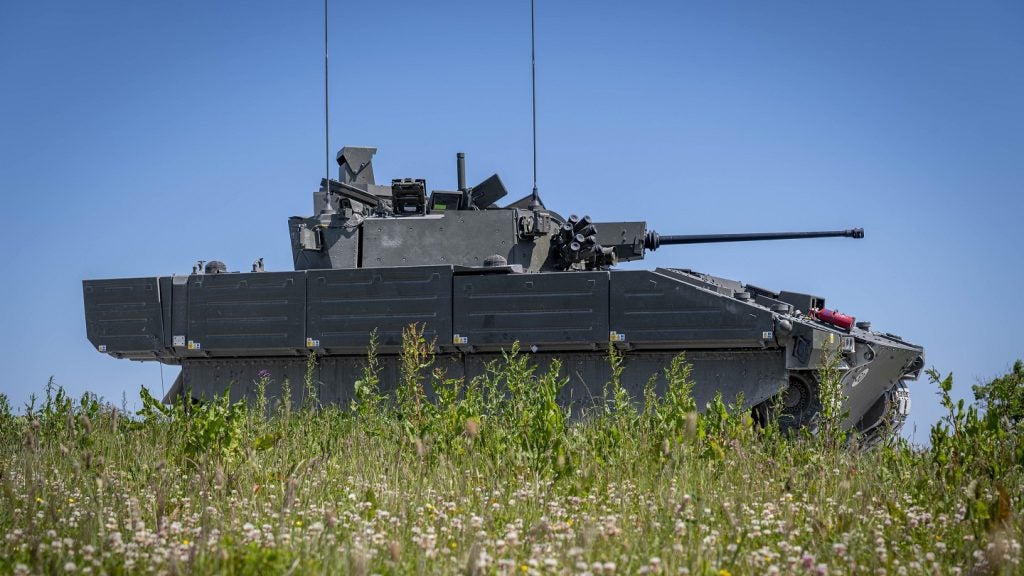
The UK will upgrade nine of its M270 MLRS fleet to the A2 variant, as part of an ongoing recapitalisation of the fleet, which could also be doubled in size from its current number of around 40 vehicles.
Prior to the outbreak of the Ukraine-Russia war following the 24 February invasion, such a development might not have gained the attention that it does today, with long-range artillery and guided munitions considered perhaps the most dominant force on the battlefield.
The M270A2 standard will see a new engine fitted and a redeveloped cabin, which will be configured in much the same way as the equally renowned M142 High Mobility Artillery Rockets System launchers.
The MLRS launcher unit comprises an M270 launcher loaded with 12 rockets, packaged in two six-rocket pods. The launcher, which is mounted on a stretched Bradley chassis, is a self-loading and self-aiming system.
Without leaving the enclosed cab, the crew of three (driver, gunner, and section chief) can fire up to 12 MLRS rockets in fewer than 60 seconds.

Manufacturer Lockheed Martin, which produced both launcher vehicles and corresponding munitions, will assist the UK in the A2 upgrade process. The upgrades were announced earlier this year as part of a $32m programme, expected to be completed by 2026, although the exact number was not disclosed at the time.
A Lockheed Martin official, speaking at AUSA 2022 in Washington, DC, confirmed to Army Technology that nine UK M270 launcher units would be upgraded to the A2 variant, although declined to say whether the rest of the country’s fleet would also benefit from the process.
The UK is also known to be seeking ways to increases the size of its M270 fleet, and with no new vehicles being produced by Lockheed Martin, additional vehicles would have to be sought from current operators. The US maintains a sizeable stock of surplus unserviceable M270A0 MLRS launchers at its Red River boneyard, which were also utilised by the US Army’s own M270 fleet upgrade programme.
Global artillery systems booming
The global artillery systems market is forecast to reach $6.8bn in 2032, driven by rising military spending and ever-more advanced platforms, according to recent GlobalData analysis. The sector is forecast to grow at a compound annual growth rate of 2.7% over the next decade.
GlobalData’s new report, ‘Artillery Systems Market Size and Trend Analysis, Key Programs, Competitive Landscape and Forecast, 2022-2032,’ revealed that the key trends driving the demand for these systems over the next decade will be the modernisation initiatives undertaken by military forces to replace their aging artillery systems with advanced ones.
Regional conflicts and uncertainty brought about as a result of the ongoing war in Ukraine are also factors in the sector’s growth, it was revealed.
Rithik Rao, aerospace and defence associate analyst at GlobalData, stated: “Artillery systems are considered a relatively cost-effective option to meet defence requirements, due to their relative mobility and ability to produce high volumes of concentrated and sustained fire, with decent accuracy. Their utility in conflict can be seen by their deployment to border areas between India and China and use in the Armenia-Azerbaijan conflict in 2020 and 2022.”

The effectiveness of artillery and long-range guided munitions to dominate in the fields of Ukraine has firmed up decisions within national procurement programmes to heavily invest in such capabilities, which can serve both an offensive and defensive purpose.
Integrating these systems with the information gathered from various intelligence and surveillance platforms, sensors and satellites, shared through network linked nodes will increase the effectiveness and accuracy of these weapons. For instance, the US Army has developed the Joint Effects Targeting System, which relies on an sensor technology to relay more precise targeting data to artillery command.
Similarly, the UK is upgrading its M270B1 MLRS variants to support an increased engagement range of up to 150km.
Rao concludes: “Extended range capabilities and incorporation of advanced fire control and precision guidance kits have improved accuracy to within 10 metres in all weather conditions. With the changing nature of warfare and the growing demand for precision arms to support troops while minimising collateral damage, artillery systems have become an ideal choice for both land and naval forces.”







